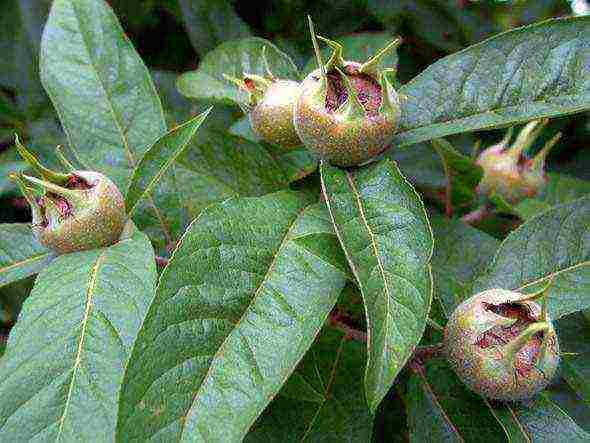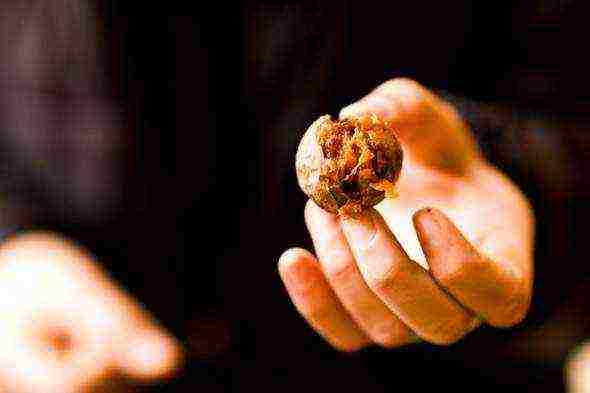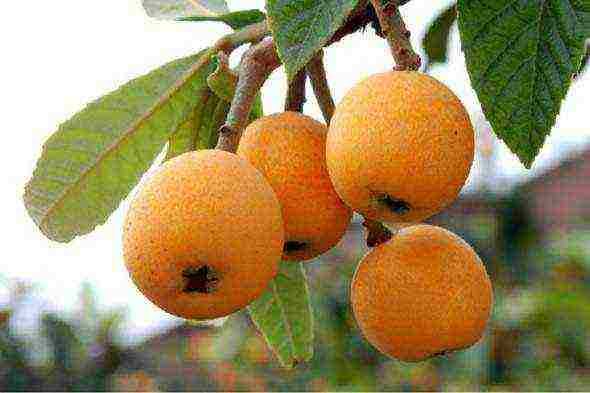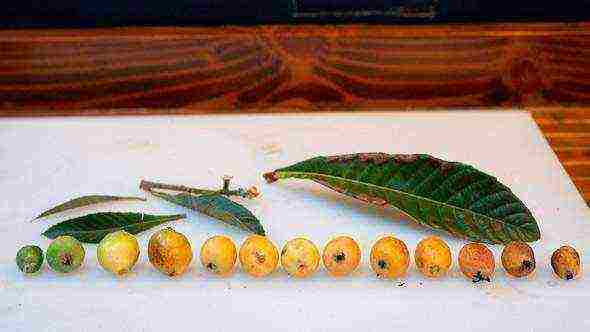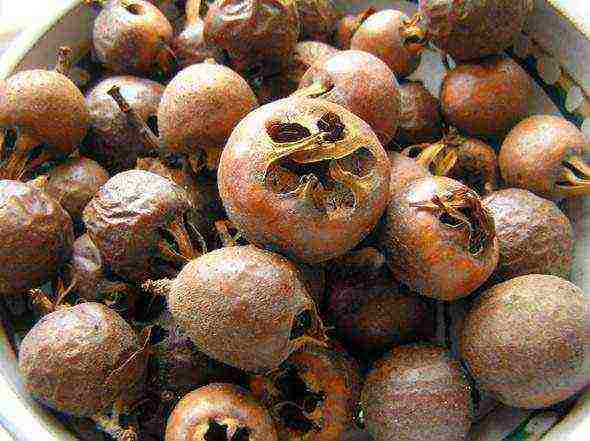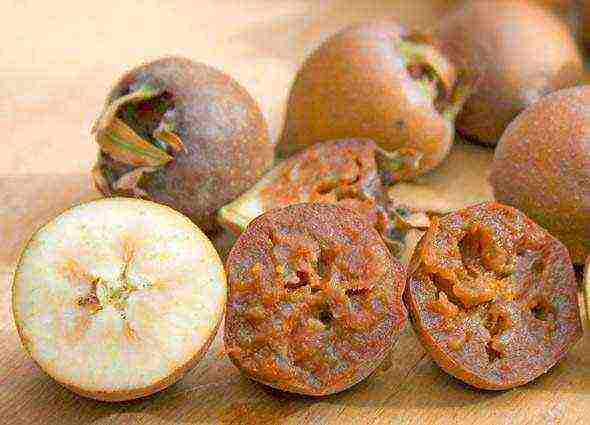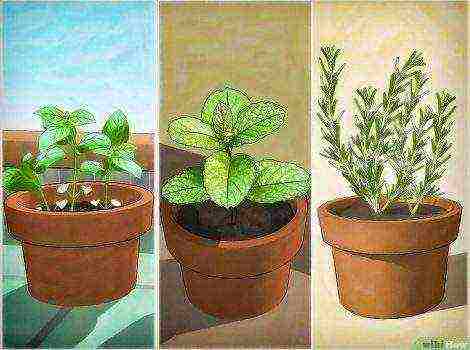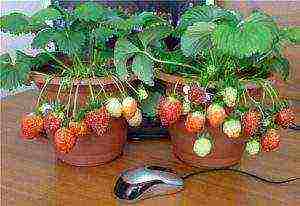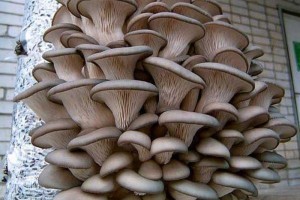Content
- 1 Cultural forms of medlar
- 2 Japanese medlar - lokva
- 3 Medlar in nature
- 4 Subtropical plant at home
- 5 German medlar. How to grow a plant from a seed?
- 6 Japanese medlar: growing at home
- 7 We take care of the loquat sprouts
- 8 Features of care for seedlings
- 9 Cultivation of medlar in the Moscow region and in Ukraine
- 10 The presence of useful properties and contraindications
- 11 Healing properties of leaves and orange berries
- 12 How to grow a culture at home from a bone
- 13 Correct planting and plant care
- 14 Harvesting and storage
- 15 Popular varieties of exotic fruit
- 16 Bone medlar at home
- 17 How to propagate the German medlar
- 18 Propagation of medlar by cuttings
- 19 Caring for Japanese medlar in a room
- 20 Care of the German medlar
- 21 Types of medlar with photos and names
Medlar is a subtropical plant belonging to the Rosaceae family. It can reach 5-6 meters in height, but at home it rarely grows above 1.5-2 m.This plant produces tasty sweet fruits containing a whole range of useful micro and macro elements, including vitamin C, apple and lemon acid. 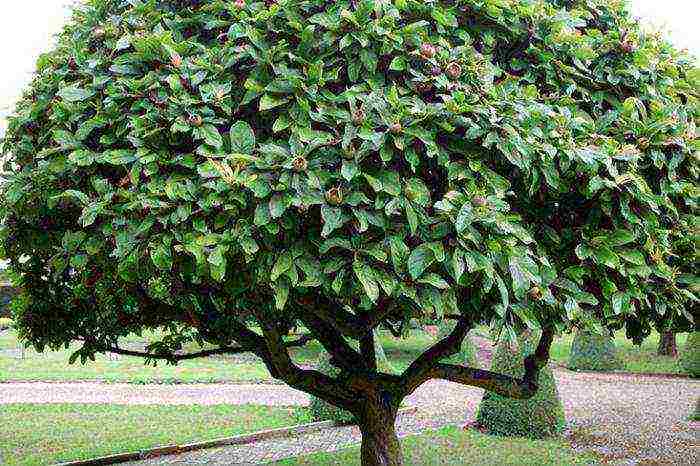 In this article, we will tell you how to grow a medlar from a bone on your own. We will also describe how to properly care for this wonderful heat-loving plant so that it grows well, is healthy and regularly yields a harvest.
In this article, we will tell you how to grow a medlar from a bone on your own. We will also describe how to properly care for this wonderful heat-loving plant so that it grows well, is healthy and regularly yields a harvest.
Cultural forms of medlar
Two main varieties are widespread - the Caucasian (Germanic) medlar and the Japanese medlar. They have their own distinctive features. Medlar is a deciduous tree or shrub with gray bark and large, dark green, glossy oval leaves. They bloom, as a rule, in the second half of April, and in the fall, before falling off, they change color to yellow and burgundy red. 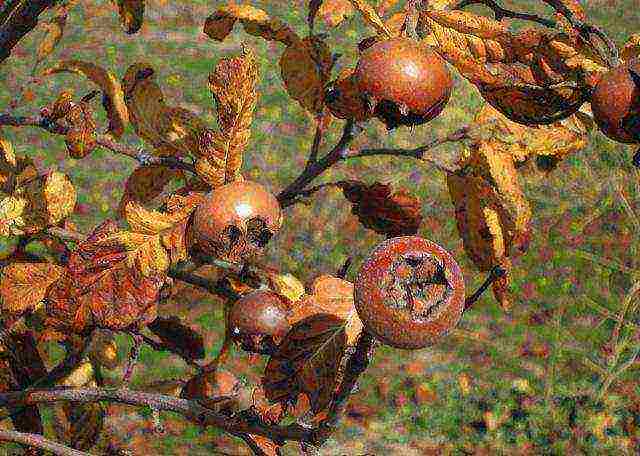 Another distinctive feature of the German medlar are five-petal flowers. They form at the tops of the shoots, have a white or pinkish color, reach a diameter of 4 cm and emit a delicate pleasant aroma. The Caucasian medlar blooms at the end of May. The red-brown fruits of the plant, collected in a brush, ripen in autumn, but become edible, tasty and sweet after the onset of frost. They reach 3-7 cm in diameter, have a spherical or oval shape. The pulp of the fruit is brownish in color, has a sweet and sour taste. One fruit contains several flattened seeds.
Another distinctive feature of the German medlar are five-petal flowers. They form at the tops of the shoots, have a white or pinkish color, reach a diameter of 4 cm and emit a delicate pleasant aroma. The Caucasian medlar blooms at the end of May. The red-brown fruits of the plant, collected in a brush, ripen in autumn, but become edible, tasty and sweet after the onset of frost. They reach 3-7 cm in diameter, have a spherical or oval shape. The pulp of the fruit is brownish in color, has a sweet and sour taste. One fruit contains several flattened seeds.
Japanese medlar - lokva
The Japanese medlar, in contrast to the Germanic, is an evergreen plant belonging to the genus Eriobotria. It has ovoid or lanceolate leaves, single large white or cream flowers. The fruits of the lokva are round, orange-yellow in color. They ripen not in autumn, but in spring, and have a pleasant sweetish taste.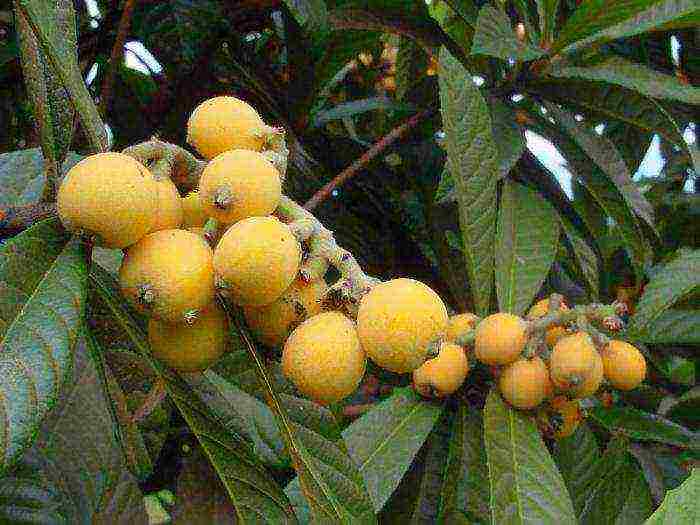
Medlar in nature
This plant has been cultivated for 3 thousand years. It was especially popular in Ancient Rome and Ancient Greece. The fruits of the medlar were consumed fresh, and a variety of compotes, jams, wine and candied fruits were prepared from them. In the natural environment, medlar is common in the Caucasus and Crimea, Georgia, Azerbaijan, Iran, Turkmenistan and southern Ukraine.
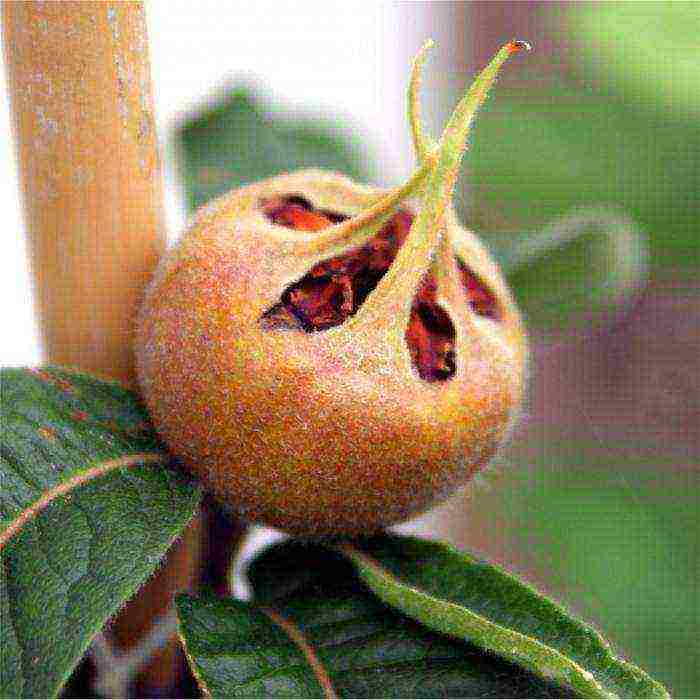
You can find this plant in Western Europe and North Africa. The medlar tree prefers a mild and warm southern climate. It grows well on stony, calcareous, red earth and podzolic soils.Medlar planting in southern regions with a seaside climate is carried out in October or November. Beforehand, the bones are soaked for a day, and then they are placed directly in the open ground. The climatic conditions of central Russia are not suitable for growing medlar in a summer cottage. But if desired, this plant can be planted in a greenhouse, winter garden or indoors. How to grow a medlar from a bone, we will tell you further.
Subtropical plant at home
It is believed that the medlar plant is quite unpretentious and unpretentious. Growing at home does not require significant effort and time from the grower. The plant grows rapidly, develops and can give a small harvest in the third year. The most suitable varieties for indoor and greenhouse cultivation are:
- Morozko.
- Tanaka.
- Champagne.
- Premier.
- Victor.
- Orange
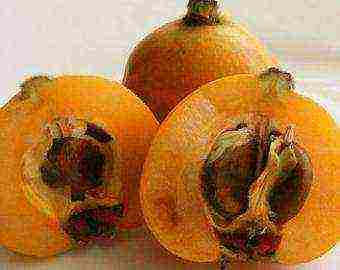
Let's look at how to grow a medlar from a bone. To get started, head to the store or market. Choose the ripe fruit of the medlar plant (fruit), without external defects, damage and rot. How to grow a copy out of it? At home, remove the seeds, wash them and dry them for three days. Next, the bones must be scarified, that is, wiped with sandpaper for 5 minutes in order to destroy the hard shell, thereby facilitating and accelerating the germination process. After this procedure, the seeds of the medlar should be soaked in water at room temperature for three days. Those bones that float should be discarded.
German medlar. How to grow a plant from a seed?
Suitable material must be dried and placed in a sulfuric acid solution for 4 or 5 hours. This solution is prepared at the rate of 1 tsp. sulfuric acid per 1 liter. water. Then the seeds are washed with water and dried again. Next, the seeds are placed in a container with wet sand, peat and sawdust. The dishes are placed in a refrigerator, in a compartment with a temperature of 1 ° C to 5 ° C. After 15 days, the container with seeds is transferred to the room, in the warmth. After two weeks, put it back in the refrigerator. And so heat and cold alternate for three months. 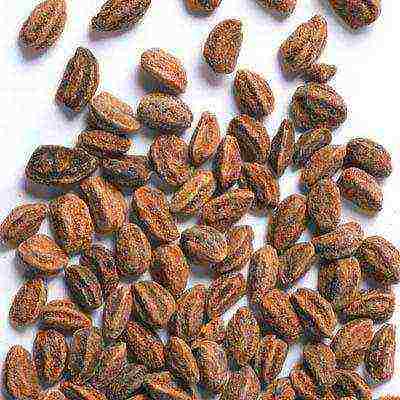 The seeds of the German medlar are extremely poorly rooted at home, so this preparatory procedure is mandatory. At the same time, they do not forget to water the sand. It should always be moist. After three to four months, the seeds will begin to sprout. After the seedlings have good roots, it will be possible to pick into separate small containers with a good substrate of humus, peat and sand in equal proportions. In this case, the central root will need to be shortened somewhat. In the first year after planting, German medlar seedlings grow slowly, but then the rate of development increases.
The seeds of the German medlar are extremely poorly rooted at home, so this preparatory procedure is mandatory. At the same time, they do not forget to water the sand. It should always be moist. After three to four months, the seeds will begin to sprout. After the seedlings have good roots, it will be possible to pick into separate small containers with a good substrate of humus, peat and sand in equal proportions. In this case, the central root will need to be shortened somewhat. In the first year after planting, German medlar seedlings grow slowly, but then the rate of development increases.
Japanese medlar: growing at home
It is worth noting that it is extremely difficult to grow a German medlar from a bone at home. Loqua seeds (a Japanese variety of the plant) take root much easier. The planting procedure is desirable in the spring. How to grow a medlar from a bone? It is necessary to use seeds that have just been extracted from the fruit. First, you should prepare a high-quality substrate from equal parts of peat, sand, humus and leafy soil. The pot can be anything. Before planting, the soil is well moistened. 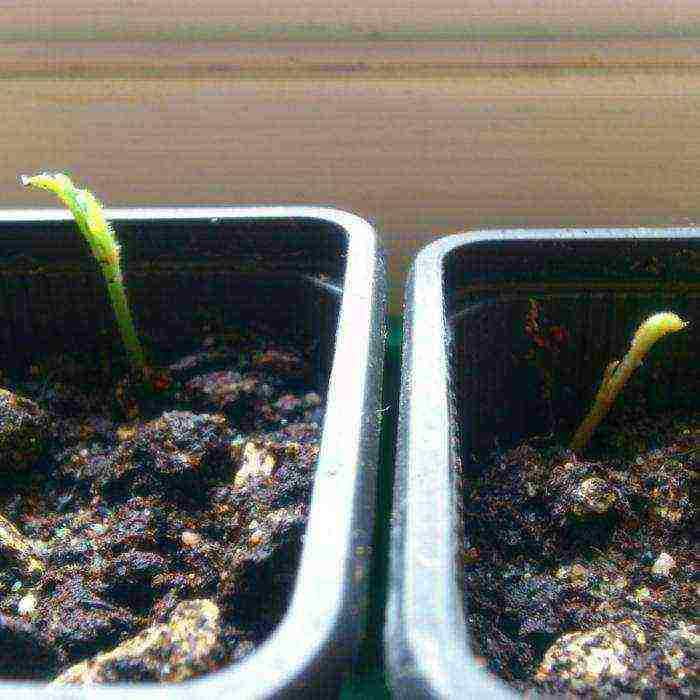 Medlar bones are placed in the substrate, slightly deepening (by 1.5-2 cm). The soil is regularly moistened, at least three times a week, and the top layer of the substrate is sprayed from a spray bottle every day. Medlar loves moisture, but does not tolerate liquid stagnation. Therefore, it is desirable that there are holes at the bottom of the pot for the outflow of excess water. The container should be covered with polyethylene. It must be removed for a while every day to prevent the formation of mold due to condensation.
Medlar bones are placed in the substrate, slightly deepening (by 1.5-2 cm). The soil is regularly moistened, at least three times a week, and the top layer of the substrate is sprayed from a spray bottle every day. Medlar loves moisture, but does not tolerate liquid stagnation. Therefore, it is desirable that there are holes at the bottom of the pot for the outflow of excess water. The container should be covered with polyethylene. It must be removed for a while every day to prevent the formation of mold due to condensation.
We take care of the loquat sprouts
After the shoots appear, and this will happen no earlier than three weeks later, the container must be moved from the windowsill to a more shaded place. Direct sunlight can kill young plants. When the shoots reach 2 cm in height, the polyethylene is removed from the pot, and the temperature in the room is maintained at not lower than 18 ° C. Watering is done 2 or 3 times a week. A month after the emergence of seedlings, a dive is performed, otherwise the seedlings will interfere with each other. Land for planting is selected non-acidic, consisting of sand, humus and peat. Now you know how to grow a medlar from a bone. This is a rather laborious process that requires effort and time from the grower. Next, we will consider what conditions loquat prefers. 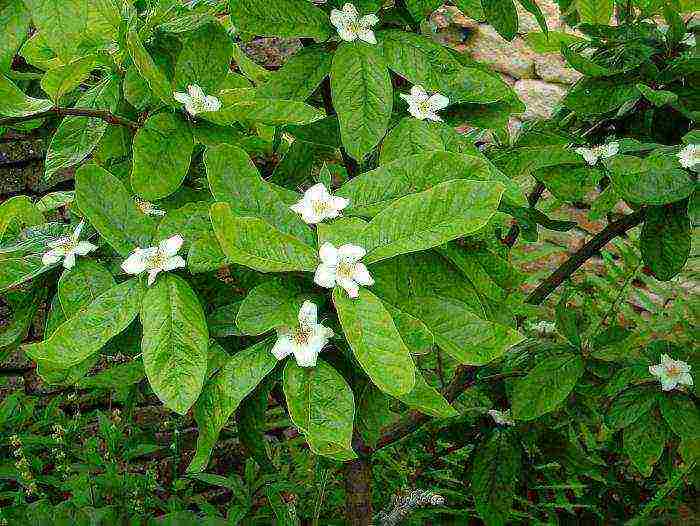
Features of care for seedlings
In order for the plant to feel comfortable, develop and grow well, it is necessary to create conditions for it that are as close to optimal as possible. The room should be kept at a temperature of at least 18 ° C. In the spring, after the onset of warmth, the pot with medlar can be taken out to the balcony, veranda or garden. The plant loves good lighting, so it is advisable to place it near a source of natural light. As for watering, the medlar prefers regular moistening with warm, settled water. The potting medium should not dry out too much. Watering is less frequent in winter than in summer. The plant responds well to spraying with water at room temperature. In the period from April to the end of August, lokva are fed with complex mineral fertilizer twice a month. Also, if necessary, prune branches that are strongly intertwined or grow too high.
Let's conclude: if you follow simple agrotechnical rules, the medlar will feel great. Growing this beautiful subtropical plant at home is within the power of even a novice florist. Good luck!
Medlar is an evergreen tropical plant... The entire trunk is entwined with dark gray bark. The leaves are large and have a gloss on the surface.
During flowering, the plant develops white fragrant flowers. The fruit is characterized by a spherical or pear-shaped shape and a thin skin. Ripe fruit tastes sour.
Is it possible to grow medlar at home in Russia, how to do it, you will learn from the article.
Cultivation of medlar in the Moscow region and in Ukraine
Southeast Asia is considered the homeland of the tropical fruit. The culture is grown in the Caucasus and Turkey. Warm countries are suitable for plant breeding, where the temperature does not drop below 0 Celsius.
If you grow medlar in central Russia, in the Moscow region or in Ukraine, you get an ornamental shrub. But observing agrotechnical recommendations, you will get a beautiful tree with delicious fruits.
The presence of useful properties and contraindications
Medlar berries contain a large amount of useful vitamins and minerals. The culture has a low calorie content.
The fruit contains the following beneficial substances:
- vitamins A, B, C;
- folic and ascorbic acid;
- potassium;
- iodine;
- manganese;
- selenium;
- calcium;
- magnesium.
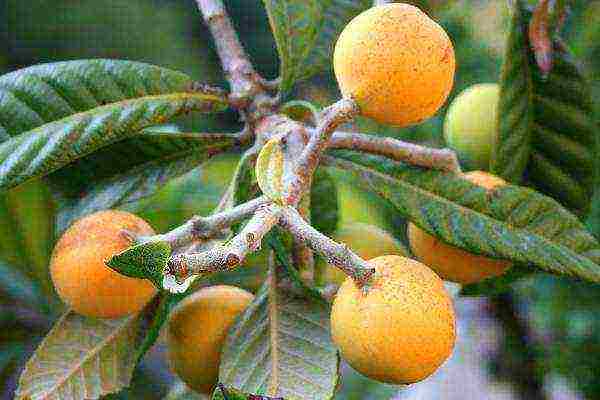 Medlar berries contain a large amount of useful vitamins and minerals
Medlar berries contain a large amount of useful vitamins and minerals
Dietitians usually prescribe the herb for overweight... If consumed in sufficient quantity, the fruit will bring great benefits to the body.
The main benefit of the fruit is that it is rich in vitamin A, which is considered essential for human eyes. The use of medlar will improve the muscles of the eyes and help restore the lost luster.
In cooking, jams, compotes, jam, liqueur liqueurs are prepared from medlar.
Who is not recommended eat tropical fruit:
- If stomach and duodenal ulcers are found, exclude the plant from the diet.
- If the pancreas is inflamed, this is a contraindication for eating medlar.
- With high acidity and severe gastritis, it is not recommended to eat fruit.
Wine and juices will only harm such people, while jams and preserves will be beneficial.
A tropical plant can cause an allergic reaction, therefore, for children, the use of culture should be limited or given after consulting a specialist.
Medlar is a Japanese relative of the Russian hawthorn ^
Healing properties of leaves and orange berries
Medlar, like other fruits, can bring many benefits to the human body:
- From a decoction of leaves you get an excellent hemostatic agent.
- Fruit can be applied for the treatment of urolithiasisto get the stones out.
- Healing culture acts as first assistant in case of gastrointestinal diseases... After eating pilaf, digestion improves. To get rid of bloody diarrhea, you need to prepare a decoction of unripe fruit.
- Alcohol tincture will help cure asthma and bronchitismade from the plant. Thanks to the use of this remedy, breathing is facilitated, the cough gradually disappears. Tincture can treat heart pain.
- If infusion of leaves of the variety gargle, colds will not or will disappear for a long time.
If a person has kidney dysfunction, it is recommended to use medlar to increase their filtration. This fruit contains molecular water, so it is easy for the human body to get rid of toxins after eating the plant.
How to grow a culture at home from a bone
The common seeds of the plant serve as seedlings.... Before growing the seeds, it is recommended to keep them in the cold for no more than 3-4 months.
Natural conditions allow the formation of shoots for 2-3 years of life, when the destruction of the shell occurs.
To speed up the procedure, a solution of sulfuric acid is used, bones are placed in it and kept for 5 hours, and then washed.
Such processing allows you to plant a crop in the fall in open ground, in the spring you can expect the appearance of sprouts. Before planting a medlar, seeds should be in warm water during the day.
Use sawdust, peat or plastic wrap to mulch the soil. A good option for planting seeds indoors: after the formation of the first shoots 25-30 centimeters, the plant must be grown in advance and placed in the designated place.
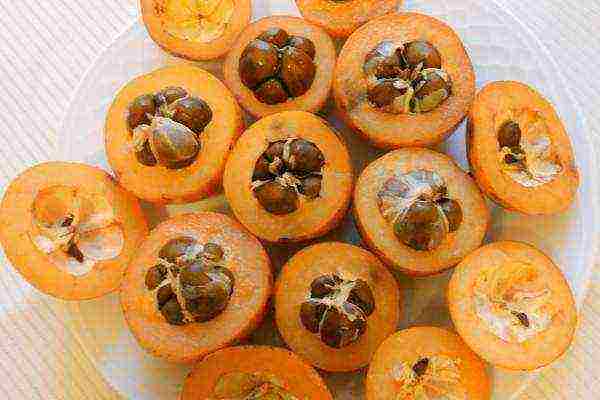 Medlar bones can serve as an excellent material for seedlings.
Medlar bones can serve as an excellent material for seedlings.
Correct planting and plant care
It is necessary to plant seedlings in prepared soil.containing the following components:
- deciduous land;
- sand;
- humus.
It is recommended to dig a hole before planting, not exceeding the size of the soil clod, designed for the root system. The seedlings are placed in the holes neatly without damaging the roots, and then they must be covered with soil mixture on top.
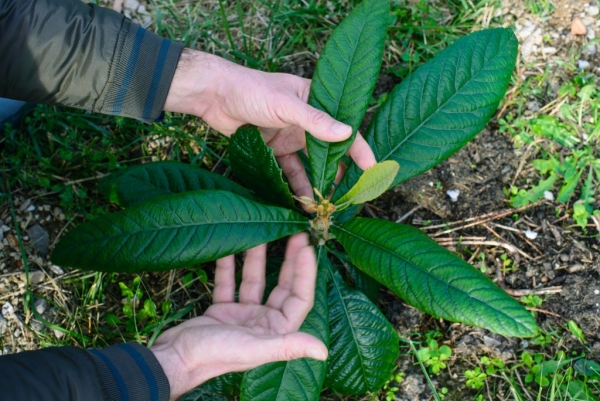 Before planting a medlar seedling, cut the leaves in half, dig a hole and place the plant there.
Before planting a medlar seedling, cut the leaves in half, dig a hole and place the plant there.
Cutting the leaves in half can reduce moisture evaporation.... To prevent rotting, as well as to prevent the penetration of pathogens, it is recommended to pour wood ash in the cut points.
Crop care:
- in the summer, the plant needs abundant watering, preventing the soil from drying out;
- deciduous cover does not require constant spraying;
- direct sunlight is not a hindrance for the variety, lighting should be sufficient;
- after harvesting, it is necessary to trim the crown;
- a soil mixture taken in equal proportions is excellent;
- from April to September, top dressing must be carried out;
- every spring, young trees need to be replanted; for adult plants, the transplant is done once every 3-4 years.
Plant roots can get a fire blight if the soil contains a lot of nitrogen. Frequent watering will also ruin the root system.
Artificial pollination is necessary for the fruit during the flowering period... It is necessary to deal with the formation of the crown, cut dry and damaged branches in time.
Most gardeners know that the culture is susceptible to disease, as well as attack by pests... The plant eats aphids and thyroid gland.
Twice a season, the shrub needs insecticide treatment... Thus, the variety can be protected from spoilage.
Carry out the treatment with "Fitoverm" - no more than 2 milligrams per 1 liter of water, "Insegar" - use 5 grams of the drug for 10 liters of water, "Lepidocid" - dissolve 30 grams of the substance in 10 liters of water.
Harvesting and storage
After dyeing the fruit, do not harvest immediately. During this period, the fruit pulp has excessive astringency.
When the fruits begin to turn brown, the tart taste disappears, the plant becomes sweet. and suitable for collection and further use.
Gather ripe fruits carefully, without damaging them. Whole fruit will stand for a long time and will not spoil.
For storing tropical crops, it is necessary to provide a cool place without access to light., but it is allowed to store the plant at room temperature. The fruits should not come into contact with each other during laying.
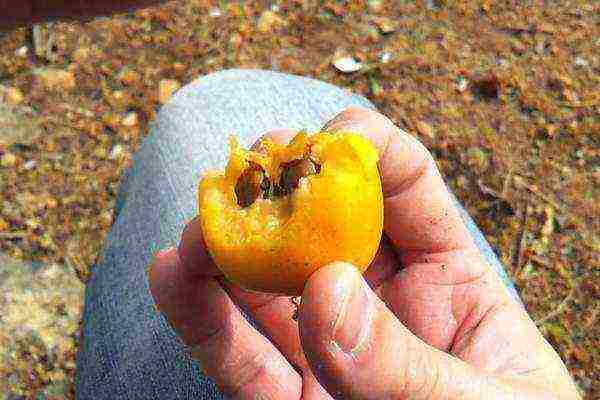 It is necessary to collect medlar when the fruits began to turn brown - their astringency disappears, they become sweet
It is necessary to collect medlar when the fruits began to turn brown - their astringency disappears, they become sweet
Popular varieties of exotic fruit
To grow a varietal loquat, it is necessary to choose seedlings with the best qualities of the mother plant.
Tanaka - fruits are large, yellow-orange colored. Usually they reach a weight of 50-80 grams. The fragrant pink pulp is characterized by the presence of juiciness and a delicate sweet and sour taste.
Champagne - a large-sized crop with a slight fluff, the color of the fruit is bright yellow. The pulp has a light creamy hue, the taste of the fruit is delicate and pleasant.
Premier - the fruits of this variety are distinguished by an orange-yellow tint. This variety has a juicy creamy pulp with a delicate sour taste.
Sayles - the usual weight for a ripe fruit is 80 grams. The culture tastes like apricot.
In addition to high taste, the fruits are preserved for a long time, they are not damaged during transportation. Simple agrotechnical recommendations allow a novice gardener to grow at home.
Without leaving your home after 4-5 years, you can collect a good harvest of exotic fruits.
Morozko - is considered a suitable crop for growing not only indoors or in a greenhouse, but also for a winter garden. The low degree of wood fragility allows the plant to be set in any shape.
Large fruits, rich in aroma and lack of astringency, are characterized by the presence of a large amount of vitamins. The berries are red-brown in color.
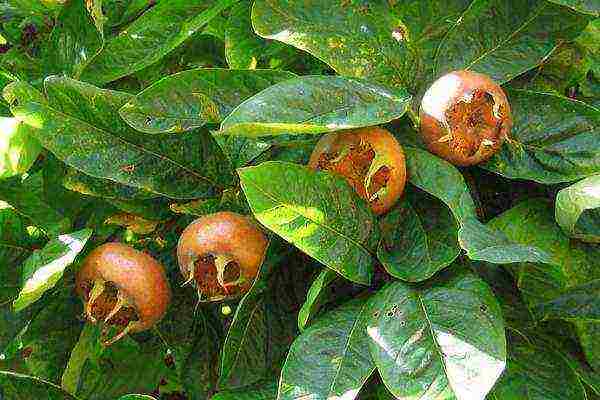 Popular varieties of medlar: Morozko, Tanaka, Seiles, Premier, Champagne
Popular varieties of medlar: Morozko, Tanaka, Seiles, Premier, Champagne
Among the fruit trees in the garden, the medlar will take pride of place and will delight its owner with delicious fruits for many years.
This wonderful tropical fruit is suitable for fresh consumption, as it is rich in beneficial properties.
The peel is removed from the plant before use.... It is not useful, does not have pleasant taste, and it is advisable not to use it.
Medlar is a shrub or tree belonging to the Rosaceae family. It grows in the warm climate of the Balkan countries, Crimea, the Caucasus, in the south of the USA and Europe.
The fruits are rich in nutrients. They can be consumed fresh, they make jams, jellies, marmalade, marshmallow, homemade wine, the leaves are used for medicinal purposes. The bush is decorative: snow-white inflorescences, similar to tuberose, flaunt on it for a long time. They exude a delicate delicate aroma.
Bone medlar at home

Grow a medlar from a bone at home photo step by step
Japanese medlar or loqua can be grown from a bone.The seeds are easy to get out of the fruit, and they even make up most of it. They are very large, somewhat reminiscent of peanuts.
Take pots 7-9 cm in diameter with good drainage holes. Fill them with a sand and peat mixture. Sprinkle abundantly with water so that the liquid completely soaks the soil and flows out through the holes.
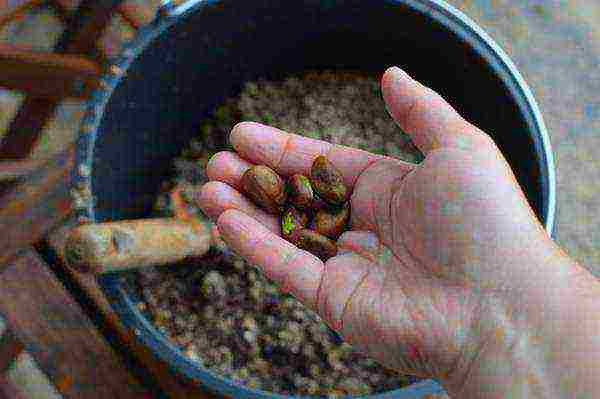
How to grow medlar from a bone at home photo step by step
Plant the seeds, deepening by 2-3 cm. You can plant one bone in a pot, or several. Not all seeds can sprout, but shoots can be waited for several months (up to five). All this time, you just need to maintain a moderate humidity without the development of mold.
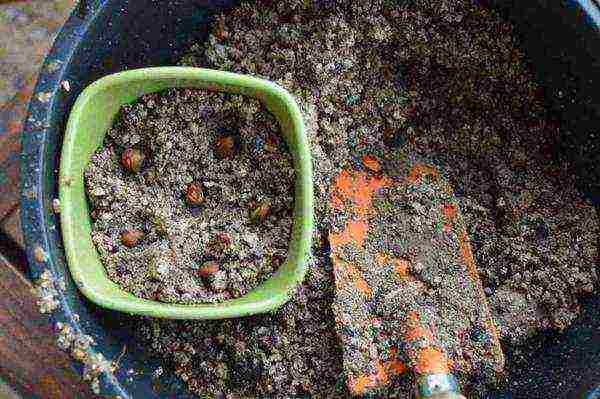
Growing medlar from a bone at home photo
Cover crops with foil, put in a warm place. The sprout will not appear soon. During this time, regularly lift the film to remove condensation. Moisten the soil with a fine spray.
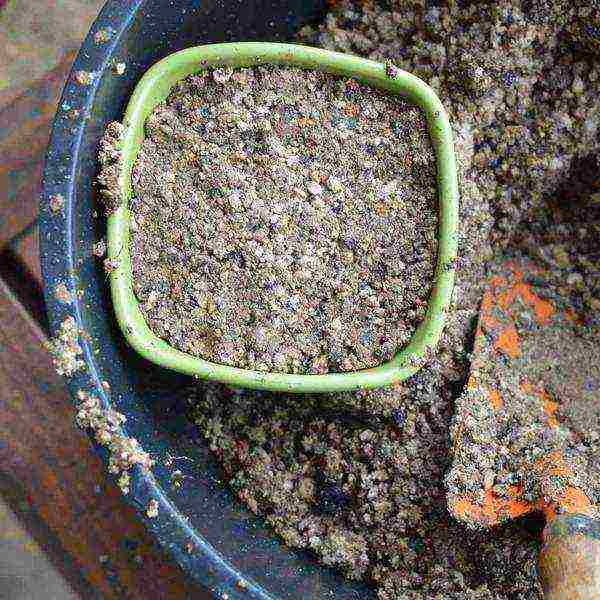
How to plant a medlar with a bone photo
Protect seedlings from direct sunlight. When you see the shoots, remove the shelter. The air temperature must be at least 18 ° C.
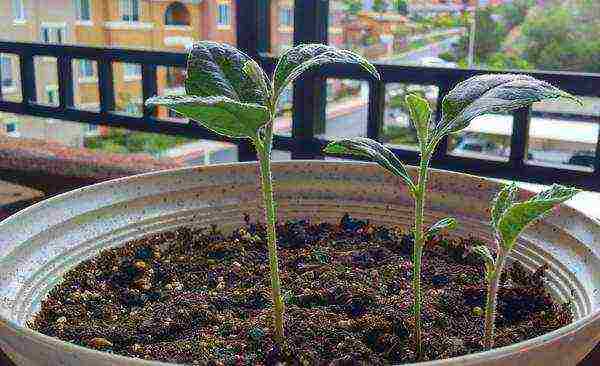
Lokva from a bone photo
With the appearance of 3-4 pairs of leaves, transplant the medlar from the bone into a container of a slightly larger diameter. Transplant soil: 2 parts of leafy land, 1 part of turf, 0.5 parts of sand.

Japanese medlar at home photo of a tree
How to propagate the German medlar
The German medlar is propagated by seeds. Cut the fruit, remove the seeds, soak in a growth stimulant solution for 2-3 hours. As a soil, you can take a universal substrate for indoor flowering plants.
- Place 5-6 seeds in a pot with a volume of 1.5-2 liters, deepening by 3-4 cm.
- Cover the crops with foil, put in a warm place for germination.
- Ventilate daily, moisten the soil as it dries.
- Seedlings will appear in 40-45 days, and after about 25 days of growth, 3 true leaves will form.
- Then transplant the plants into separate pots using the transfer method.
Propagation of medlar by cuttings
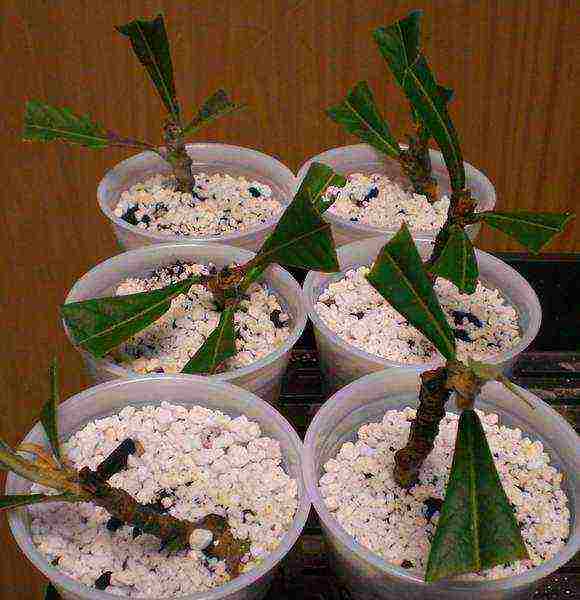
Propagation of medlar by cuttings photo
Both types of medlar are surprisingly viable - they reproduce successfully by cuttings.
You can root the cuttings of the medlar in soil or water (in the latter version, take a non-transparent container or wrap the jar with a dark cloth, paper - the roots appear in the dark). Rooting soil - sand and peat in equal proportions. The bottom cut should be at a 45 ° angle, remove the leaves, leaving a couple at the top. Deepen into the soil by 4-5 cm, water. When rooting in water, a liquid level of up to 2 cm is sufficient. To create a greenhouse effect, cover with a bag or plastic cup on top. Place in a warm place.
The roots will appear in a couple of months. Transplant the cutting into loose, nutritious soil. Provide abundant watering, illuminate with lamps.
Caring for Japanese loquat in room conditions
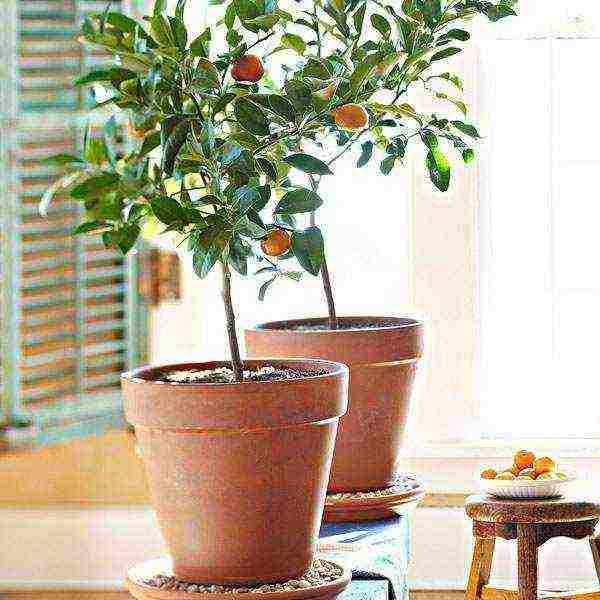
Medlar japanese cultivation at home care and reproduction
Transfer
Japanese medlar (lokva) should be transplanted annually until the age of 5 years, then every 3-4 years. Be sure to place a drainage layer on the bottom of the container. Transfer together with the earthen lump, without violating its integrity. For mature plants, replace the topsoil every spring.
The least painful medlar tolerates the transplant after the end of fruiting.
Watering
Keep the soil slightly moist during vigorous growth: water 3-4 times a week. Light drying of the soil is allowed during the period of relative dormancy. Water for irrigation requires softened water, 3-4 ° C warmer than the air temperature. After watering, gently loosen the soil.
Air humidity
Adequate room humidity must be maintained. The leaves are pubescent, it is better not to spray the plant, but to bathe the floor with a warm shower once a month. Place periodically on a pallet with damp moss, pebbles, expanded clay.
For the summer season, take it out to the balcony or garden - keeping it outdoors encourages growth.
Lighting
Lighting is required bright. The most suitable for growing are the southeast-facing windows. Fruit setting occurs at a time when there is not enough sunlight. Extend daylight hours artificially up to 12 hours. Use fluorescent lamps.
Pruning and feeding
The Japanese medlar does not need special pruning. Remove only dead or broken branches.
During the growing season, feed young plants every 3 weeks with complex mineral fertilizers. For an adult plant, 2-3 feeding per season is enough.
Care of the German medlar
When growing indoors, follow the same care guidelines as for the Japanese medlar.
Some differences:
- In winter, the German variety does not bloom, so there is no need to create greenhouse conditions for it. Feel free to place the pot with the plant on the glazed balcony (the air temperature should not drop below +2 ° C), stop watering completely.
- Pinch the tops if you want to form a bush. No pruning is required for tree-shaped growth.
- German medlar can be sprayed.
German medlar is often grown in the garden - it can withstand frosts down to -30 ° C. Choose a well-lit area with fertile, neutral soil. Avoid close groundwater, water sparingly.
Types of medlar with photos and names
Culturally cultivated 2 main types of medlar, which are very different from each other.
Japanese medlar or loqua Eriobotrya japonica
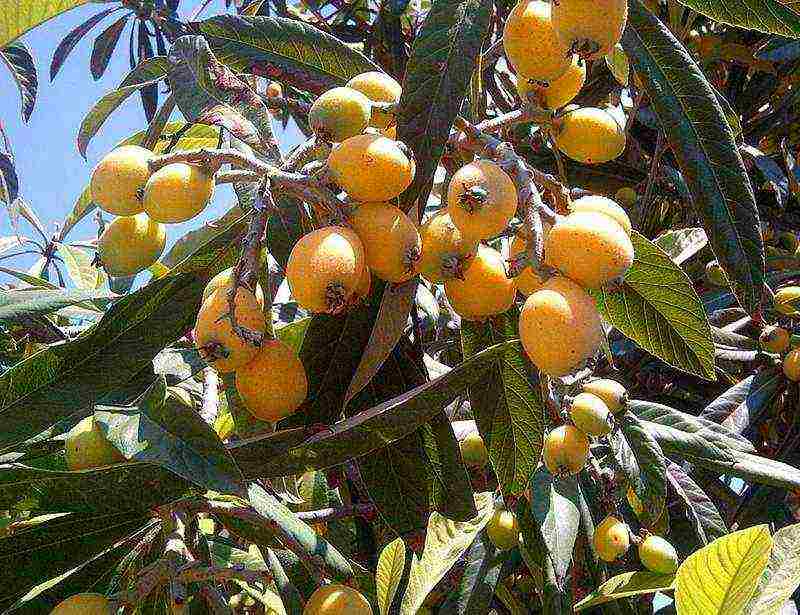
Japanese medlar or Lokva Eriobotrya japonica photo
An evergreen plant, the leaves are similar to those of a walnut, slightly pubescent. It begins to bloom in November and bears fruit in the spring (May). Blooms on the shoots of this year. Fruits are round in shape, apricot color, have one large stone. The skin of the fruit is thin, the pulp is puree, has a delicate melting taste and apple aroma. They are absolutely not shelf-stable, you will not find them on sale - you should feast on immediately from the bush.
Lokva is thermophilic, grown outdoors in a subtropical climate. In autumn, flowering begins, the leaves acquire a red tint, which looks very impressive.
If the climate does not allow, grow loqua indoors. Do not be afraid that the tree will take up a lot of space: growth is limited to a height of 1.5 m.
German medlar Mespilus germanica
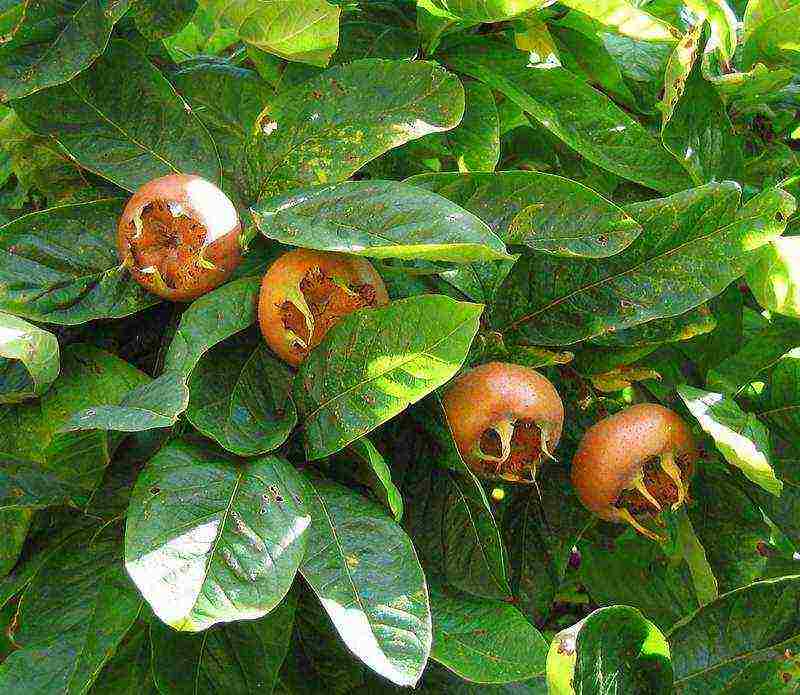
German medlar Mespilus germanica photo
Deciduous plant. The leaves are oblong, dark green, glossy. Flowering occurs in late spring-early summer, fruiting occurs in October-November. Blooms on the shoots of last year. The fruit is firm, with a dense dark red skin, contains 5 small seeds. The berries taste sour, and when frozen, they become softer, acquire a sweet taste. Wait for the frost to taste them.
This type of medlar grows well in cold climates, tolerating frost stubbornly.
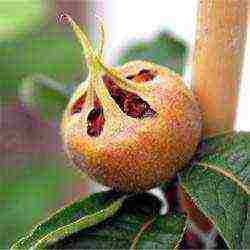 Medlar is a subtropical fruiting tree that belongs to the Rosaceae family. There are only about 30 varieties of this plant, but the most famous are Germanic (Caucasian) and Japanese medlar. These varieties are very different from each other, but meanwhile they have a pleasant aroma and unusual taste. You can grow this decorative tree at home, but it will need careful care. The medlar itself is undemanding, so any soil is suitable for planting. It can be grown from seeds (bones) or by propagation of cuttings.
Medlar is a subtropical fruiting tree that belongs to the Rosaceae family. There are only about 30 varieties of this plant, but the most famous are Germanic (Caucasian) and Japanese medlar. These varieties are very different from each other, but meanwhile they have a pleasant aroma and unusual taste. You can grow this decorative tree at home, but it will need careful care. The medlar itself is undemanding, so any soil is suitable for planting. It can be grown from seeds (bones) or by propagation of cuttings.
Varieties and varieties
Having tasted the fruit of the medlar for the first time, you are unlikely to find a comparison to it. It doesn't look like anything. Moderately sweet with a pleasant sourness. Some argue that loquat is a flavor mix of pear and cherry, others speak of a combination of apple, apricot and strawberry. But how many people, so many opinions.This fruit is extremely beneficial. It has a positive effect on the gastrointestinal tract and strengthens the intestines, and it is also recommended to use it for urolithiasis.
The medlar has large leathery leaves that have a glossy sheen on the outside and velvety on the inside. The flowers of the plant are very fragrant, they are white or cream in color.
There are two of the most famous and popular types:
- M. germanskaya - winter hardy variety. The growing season lasts until the onset of cold weather. She has a well-developed trunk, and the shoots have thorns. Leaves are deep green in color, large in size. The flowers of the Caucasian (Germanic) medlar are initially white in color, but later acquire a pinkish color and a delicate aroma. Flowering occurs in May, and fruit ripens only in autumn. The color of the fruit is brownish-red and becomes edible only after frost.
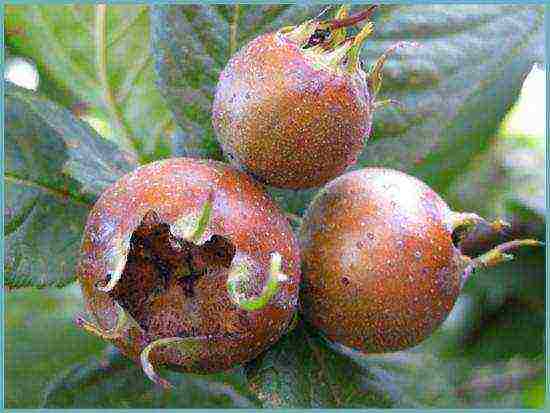
Medlar
- M. Japanese - a tree up to 5 m high. It has large oblong leaves. The timing of flowering and fruiting differs from the German medlar. This species blooms from September to March and ripens in June. Shoots and flowers are pubescent. Fruits come in various shapes: pear-shaped, spherical, oval or flattened.
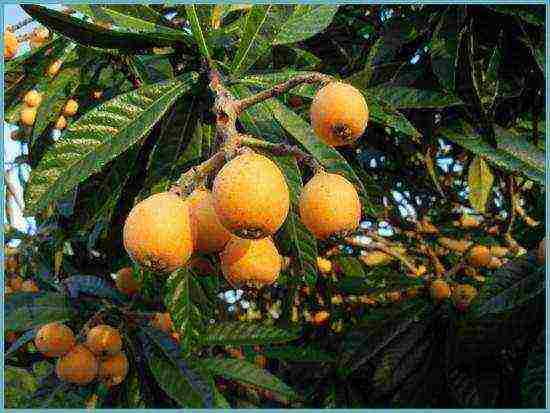
Japanese medlar
In addition, there are several varieties that are grown indoors.
Advice. It is recommended to choose seedlings that replicate the best characteristics of the donor.
- Morozko is a variety that is perfect for growing at home or in a greenhouse. It has large aromatic fruits of red-brown color, containing a considerable amount of vitamins and microelements. The fruits are devoid of tart taste.
- "Tanaka" is a variety with large orange-yellowish fruits, similar in shape to a pear. Average weight of one fruit is from 50 to 85 g. Pink pulp with sweet and sour notes.
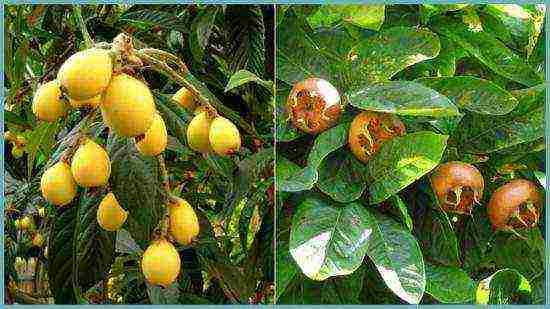
Variety Tanaka (left) and Morozko (right)
- "Champagne" is a variety characterized by its bright yellow pubescent fruits. Creamy pulp with delicate taste and captivating aroma.
- "Premier". Medlar with juicy pulp and light sourness. Fruits are orange-yellow in color.
- "Silas" is a variety with pronounced orange fruits, the weight of which can exceed 80 g. It tastes like apricot.
Landing: at home and outdoors
If you decide to grow medlar at home, then know that a good harvest can only be obtained with proper care. Planted in the autumn or spring in a pot or flowerpot. Moreover, its width should allow the root system of the medlar to fully accommodate. The plant loves slightly acidic or neutral soils and does not tolerate stagnant water at all.
Advice. Lay a drainage from expanded clay, small stones or gravel on the bottom of the container. This will prevent stagnant water. When planting, add mineral fertilizers and bone meal.
If the planting site of the medlar will be a garden plot (for example, in the Moscow region), then know that the tree should not be planted in places where groundwater is located too close to the earth's surface.
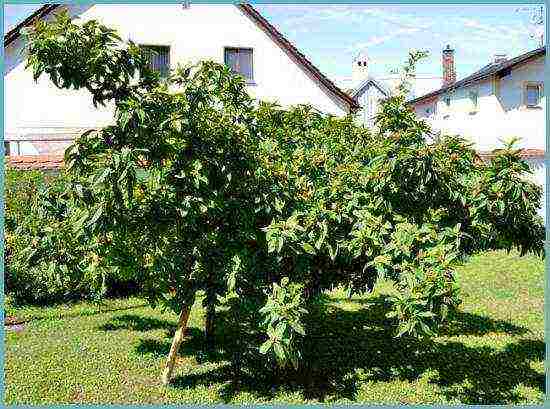
Growing medlar in the open field
- Before planting the medlar, remove the sod and dig a hole of the desired diameter and depth.
- Apply fertilizer to the bottom of the pit. Complex fertilizer and bone meal are suitable.
- Plant the medlar and drive in a support next to which the tree will be attached.
- Pour water over the hole, plant a seedling, sprinkle with soil.
- Water and remember to mulch the soil with a good layer of humus or compost.
Care
The first few years after planting the medlar it is necessary to cut the branches by half, then by a quarter. An adult tree is cut very little.
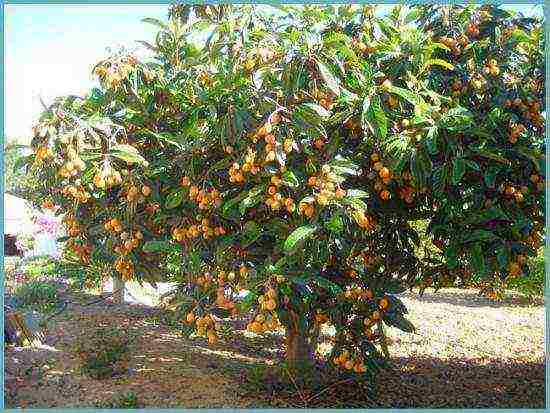
The tree needs pruning only in the first years of life.
Medlar loves the sun, it has a beneficial effect on the flowering of the plant. It can withstand frosts down to -14 degrees, but if a tree is grown for the purpose of obtaining fruits, then even a slight minus temperature is destructive for it.
When grown in apartment conditions, the medlar must be regularly watered and sprayed with water.
Attention! In winter, watering should be reduced, but not allowed to completely dry out the soil.
Fertilizer
Growing medlar leads to depletion of the soil, so you should regularly feed the plant. Better to do this in summer or winter. Fertilizer is applied one day before watering.
Attention! Phosphate fertilizers are used during the flowering period, and potash fertilizers are used during active growth.
Reproduction
Medlar propagation is carried out in several ways.
Seed method. The seeds are pre-soaked in water for a day. In areas with a warm climate, it is permissible to sow directly into the ground. The best time for sowing in the ground is October-November. You can also do this in the spring, but only after stratification.
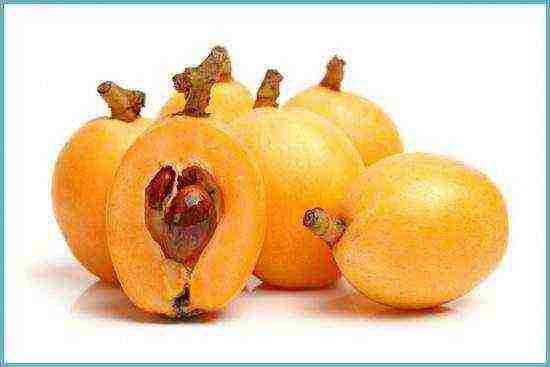
Medlar fruits
At home, the culture is grown at a temperature of no more than 10 degrees. For this, a mixture of decayed foliage, turf, humus, peat and sand in equal parts is used. The seeds will not germinate soon, only after about a year. Caring for them is not much different from growing other plants.
Attention! The seedlings of the plant grow actively for the first 7 years, then there is a slight lull, and only after 13 years of life the tree begins to develop vigorously again.
Vegetative method. The Germanic medlar mainly reproduces by layering. All manipulations with the plant are carried out in the fall. The branches are bent to the ground and fixed. Transplantation of the medlar and separation from the mother base is carried out after the foliage has fallen.
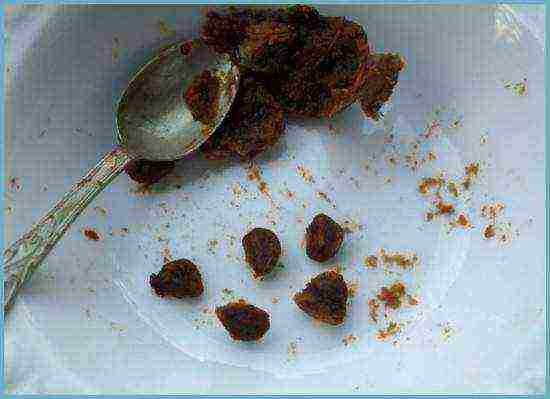
German medlar seeds
Cuttings. This method is suitable for the Japanese medlar. The stalk is rooted by burying it in moist soil. We must not forget about drainage and timely watering. Hybrid and garden varieties can be propagated by grafting on apple and hawthorn.
Diseases and pests
If you grow a crop at home, then no diseases and pests are afraid of him. It is important to monitor watering. Excessive moisture or dry soil can lead to the development of stains.
Scabbards and sooty mushroom are the main enemies of the medlar. But it will not be difficult to cope with them if you use chemical agents to combat pests and diseases.
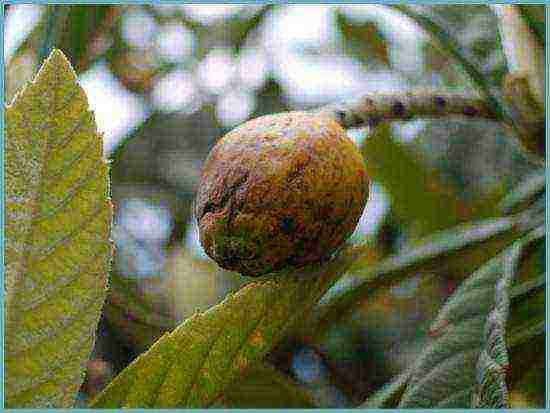
Rust stains on medlar fruits
Medlar is an exotic fruit that conquered many with its unusual taste. This plant is unpretentious to care for. Basically, it comes down to moderate watering and pruning of the tree. The fruits of the plant are consumed both fresh and processed. It is impossible not to say about the benefits of fruits: they have a positive effect on the work of the stomach and intestines.
Exotic medlar: video
Growing medlar: photo
